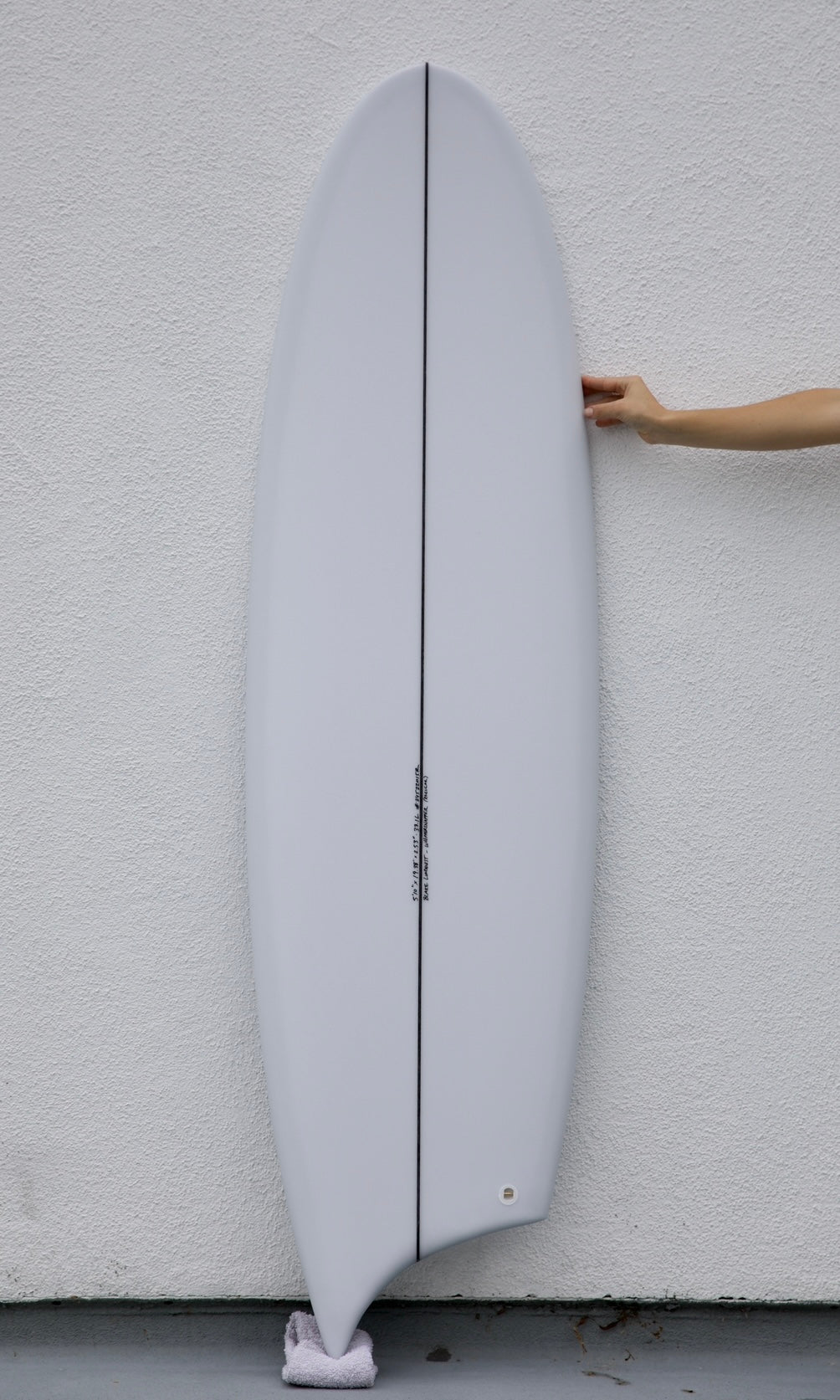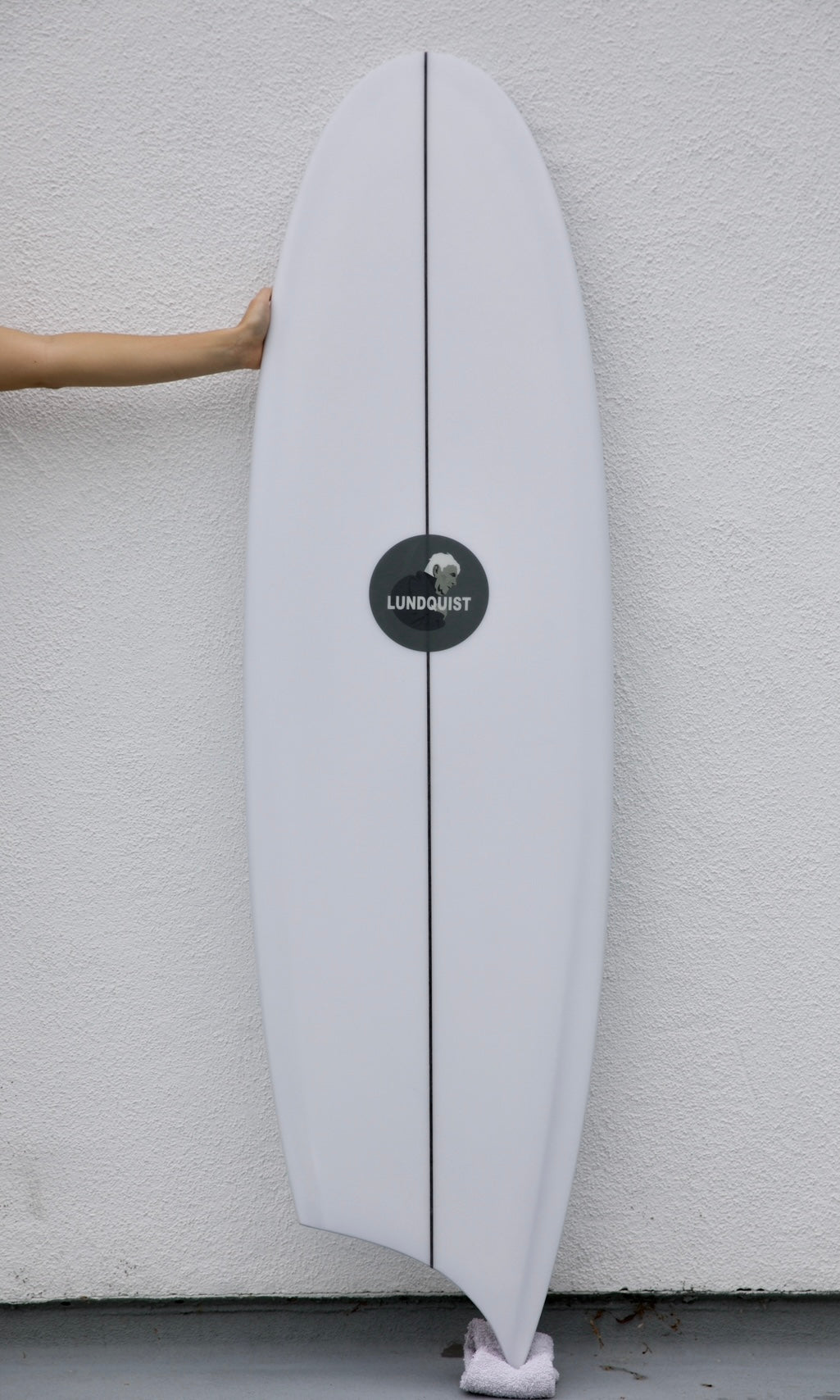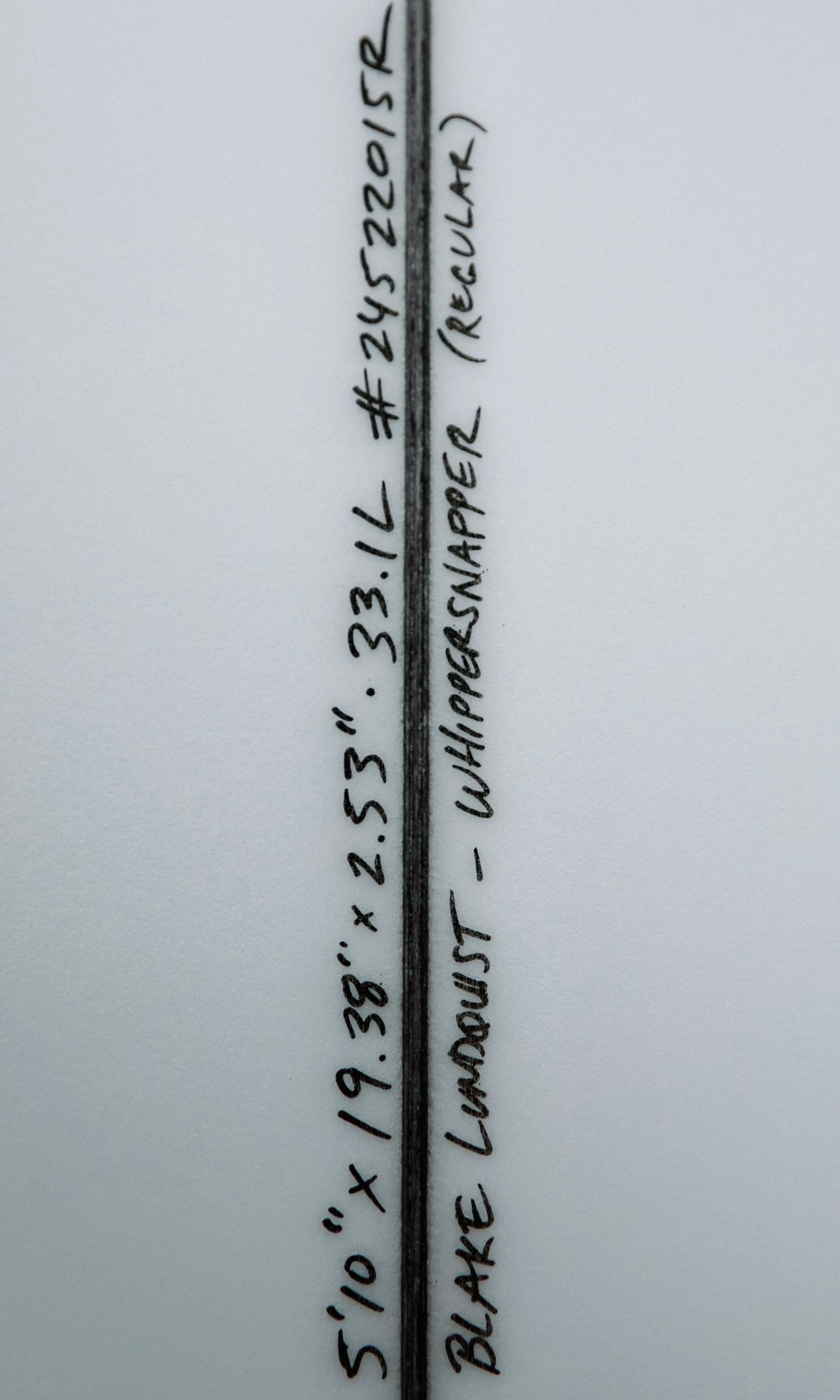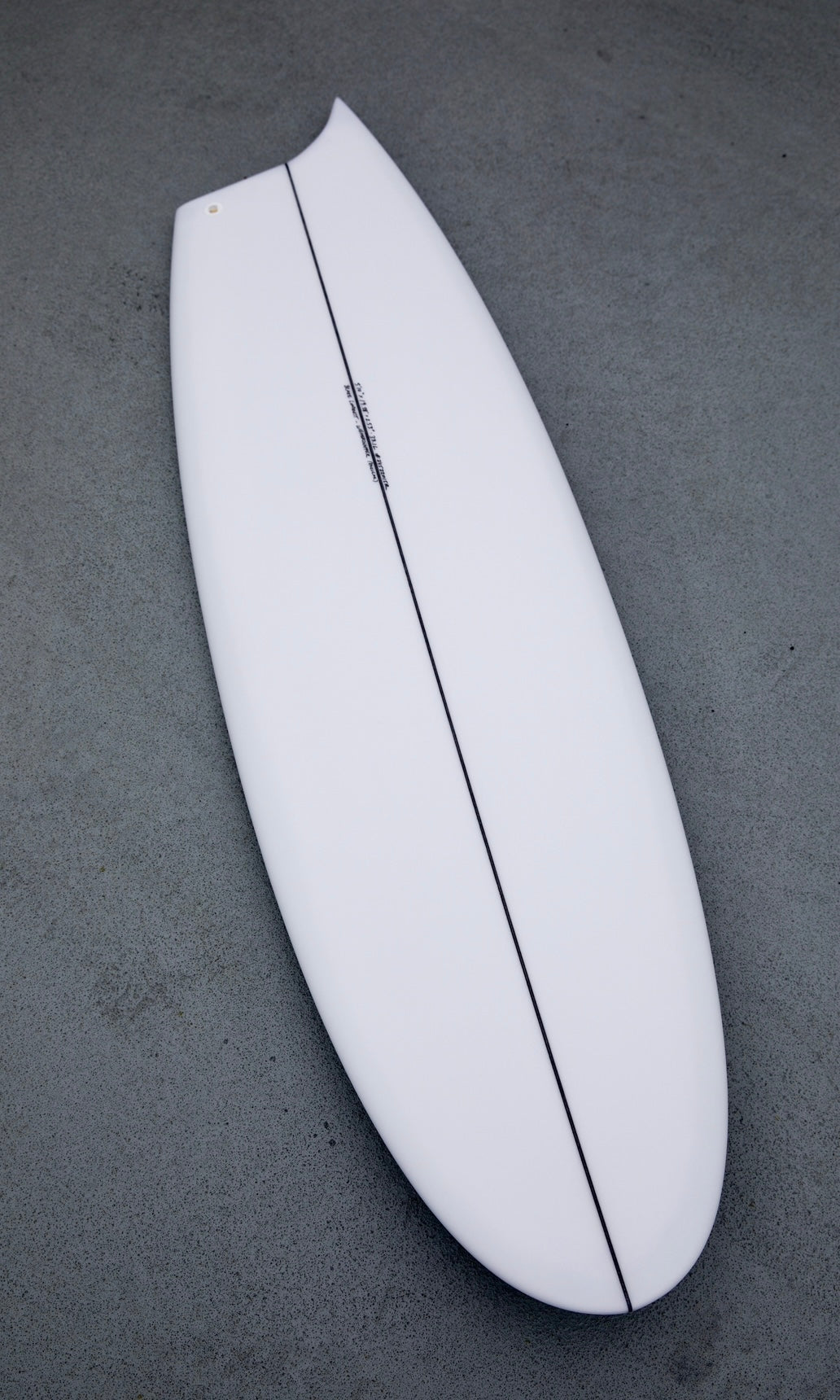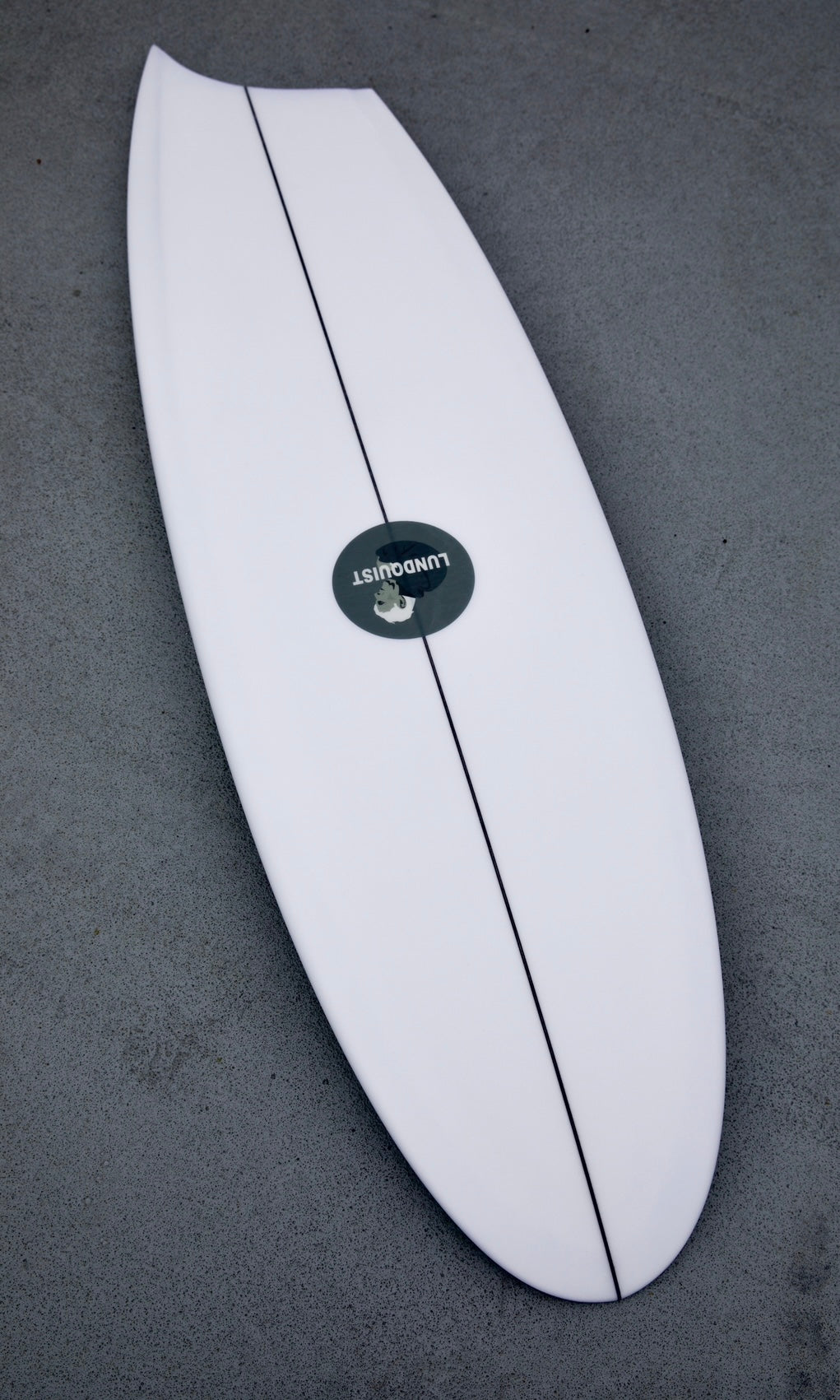Lundquist Surfboards
5'10" Whippersnapper
5'10" Whippersnapper
5'10" x 19.38" x 2.53" x 33.1L
There is one thing that is always true of surfboards as a whole, no matter their symmetry — only one rail can be always engaged at a time on the sloped surface of a wave. With this in mind, imagine how changing up a board’s symmetry could play to your benefit depending on whether you are going right or going left, whether you are surfing your frontside or your backside. One main benefit of why asymms can perform well is the way it transitions between turns. Since the rails are different lengths and since only one rail can be engaged at a time on the wave, it’s like you get two different surfboards in one — a board that favors you on your frontside (+ toe-side) and on your backside (+ heel-side).
A longer inside (or toe-side) rail paired with a shorter outside (or heel-side) rail will generate a lot of speed out of a bottom turn and give you somewhat of a recoil effect off the top. In other words, energy is loaded up through the coiled bottom turn and is released through the top turn — projecting you back into the wave with great power.
Glassed with two layers of 4oz fiberglass on the deck and one layer of 4oz on the bottom, with an additional 4oz deck patch over the back foot and a 4oz tail patch for added protection of the fin boxes. I use s-cloth fiberglass on my shorter boards — a more premium fiberglass cloth than what is used in standard surfboard construction — it has a better tensile strength and is military-grade fiberglass that weighs the same as e-cloth (surfboard standard) but is much stronger, resulting in a board that will last longer than an average board. It’s not often used due to its hefty price tag but I include it with every shortboard and twin fin because I want my boards to stand the test of time more than normal. Most company’s “team rider” surfboards are built with s-cloth, but I choose to eat the cost and do it for all my lightweight boards.
Shipping is available
Couldn't load pickup availability
